Let’s dive on into Iceland Poppies! Plant Profiles dive deep on one plant variety. They are meant to provide you with enough information to make good growing decisions. A desire to grow gorgeous flowers is one thing. However, discerning if a particular plant is right for you and your climate is a whole other ballgame.
My intention here is to give you as much practical information to make these decisions. However, I’m going one step further and taking you completely behind the scenes to share exactly what has worked for us as well. For this reason, Plant Profiles are broken up into what I’m calling the “Nuts and Bolts (N&B)” and “Behind the Scenes (BTS).”
If you haven’t already, please be sure to read the FFY Introduction to learn more about how Plant Profiles are organized.
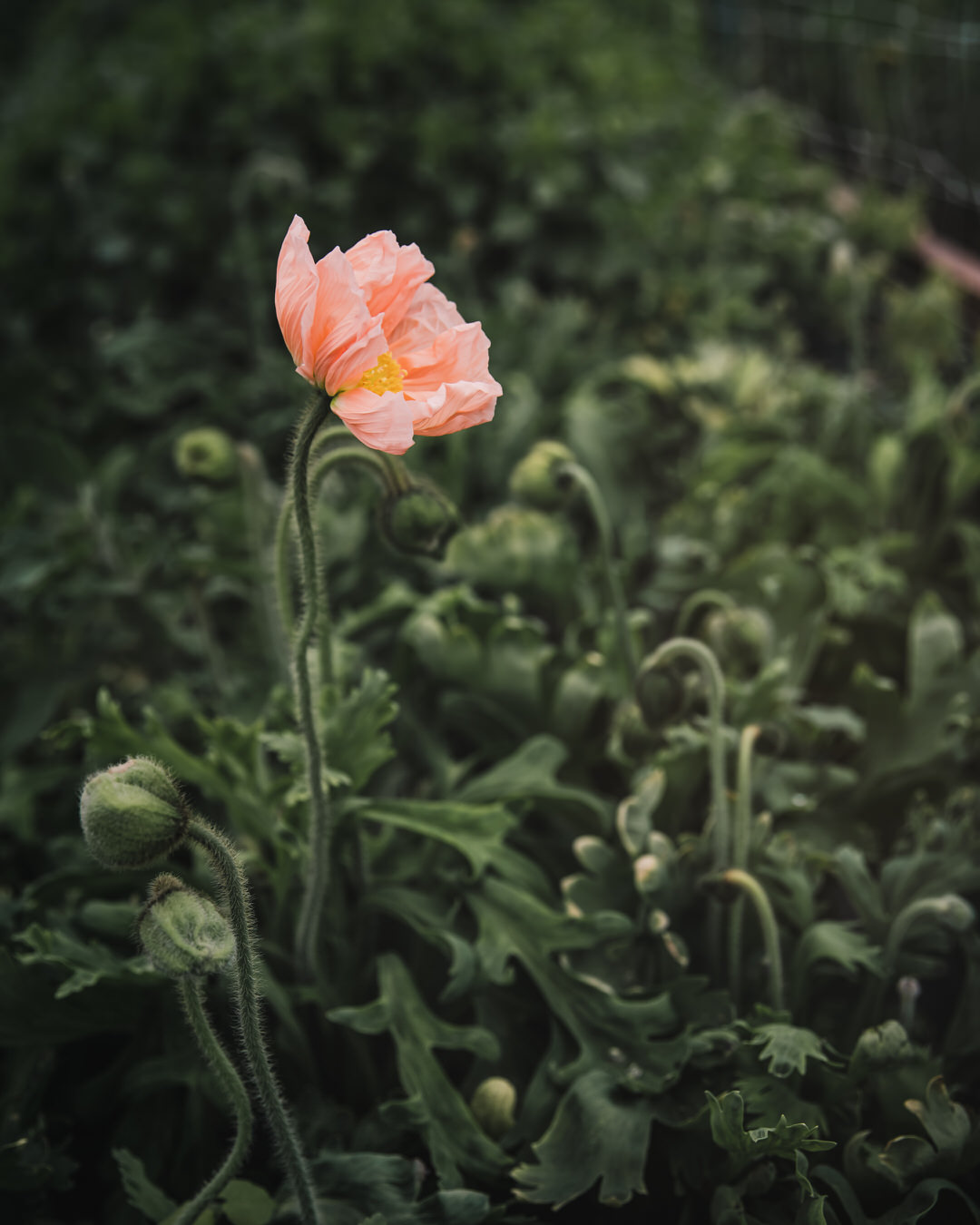
Primary Sources
The primary sources for the N&B portion come from:
- Postharvest Handling of Cut Flowers and Greens: A Practical Guide for Commercial Growers, Wholesalers & Retailers (Dole, Stamps, Carlson, et al).
- Specialty Cut Flowers, 2nd Edition, Revised & Enlarged (SCF): Industry standard for both new and experienced growers on the production of annuals, perennials, bulbs, and woody plants for fresh and dried cut flowers (Allan M. Amritage and Judy M. Laushman)
- Johnny’s Selected Seeds (Johnny’s): Johnny’s has been in the business for 50 years, with a research farm dedicated to finding the best seeds and tools for farmers and gardeners
- BOSTON Ornamental Terminal Prices. Specialty Crops Market News Federal – State Market News Service, USDA (as of 14-FEB-2023
- Farmer Bailey’s website: Bailey Hale is a past Regional Director of the ASCFG, seed-crop producer, plug broker, and a leading farmer-florist expert)
Zone Considerations
- Bailey Hale and Thomas McCurdy’s previous farm, Ardelia Farms, was located in Zone 4a Vermont
- Johnny’s Selected Seeds research farm is located in Zone 5a Maine
- My farm, Petal Back Farm, is located in Zone 4b Wisconsin
General Information: N&B
Latin Name Name: Papaver nudicaule
Common Name: Iceland Poppy
Origin: Subarctic regions
Days to Maturity: 85–100 days
Life Cycle: Short-lived perennial/hardy annual
Spacing: 6–12″
Height: 15–30″
Iceland Poppies belong to the Papaveraceae family. While there are many varieties of poppies, we’re focusing on one of the best for cut flowers: Iceland Poppies. While poppies can be a bit finicky, there are a number of tips and tricks to growing them successfully. And they’re worth figuring out, as they are completely adored by florists, customers, and growers alike. They come in a wide variety of colors, from bold burnt orange, raspberry, and egg-yolk yellow to soft pastels in salmon, peach, light pink, buttercream, and white. And my favorite part of all is the amount of movement they add to arrangements and bouquets!
General Information: BTS
Poppies are tricky, but they are SO worth it! Those bendy stems and tissue-paper blooms are a designer’s dream–when they are good, they are so freakin’ good. They were the stars in a few bridal bouquets I did in June, and hopefully we’ll get some good photos back from the photographers that I can share with you!
While I absolutely adore their whimsical blooms, they can be a bit challenging, but also totally doable. From erratic germination to seedling failure to shorter vase life, you might wonder if they are worth it. For me, it’s a heck yes (we named our dog, “Poppy” after all). I’m sharing everything I’ve learned with you in this plant profile, and hopefully with these tips and tricks, you’ll give them a try and fall in love too. Honestly, I think folks make them out to be harder than they truly are 🙂
Throughout this plant profile, I may use the general term “poppy” or “poppies” but I am specifically referring to Iceland poppies. The reason why is because they are my favorite for fresh-cut flowers, not only for their flouncy blooms but also for their vase life. Of all the poppies, they have the longest vase life, and there are only a couple of specific varieties that I find are worth growing (see more below).
What I love most about poppies as a cut flower:
- Whimsical blooms
- Incredible colors
- Unique, wow factor
- Playful stems
- Fabulous for design (especially adding movement to garden style)
- Popular with customers and florists
- Prolific
- Can be stored dry
But every rose has its thorn, right? Potential shortcomings:
- Erratic germination
- Tiny seeds
- Cannot be in trays too long
- Can have shorter vase life (but there are tricks to get them for about a week)
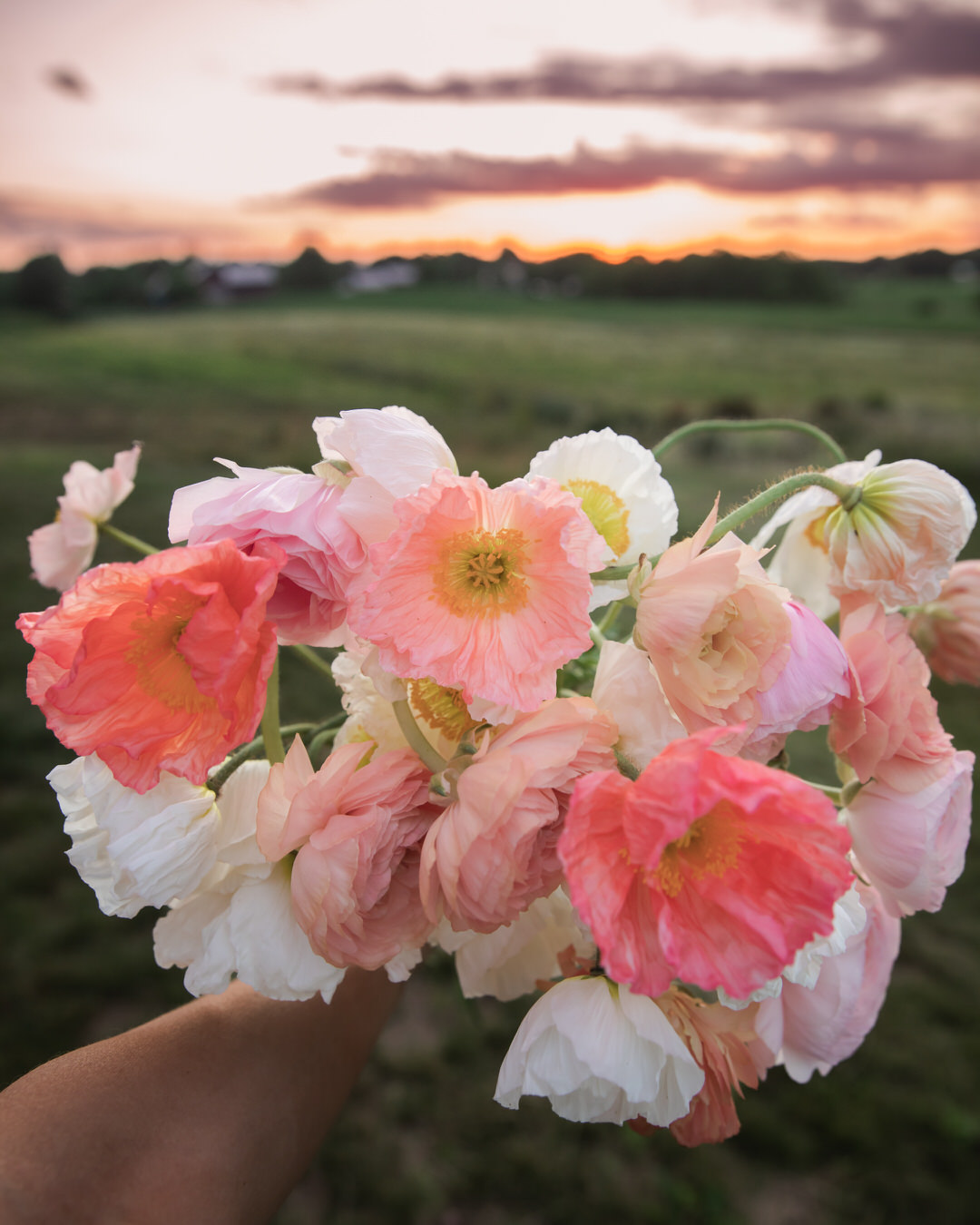
Propagation: N&B
All poppies are grown from seed but germination can be erratic. Johnny’s recommends sowing into 128-cell or other small cell tray 6–8 weeks before transplanting. Cover seeds very lightly as light aids germination. Bottom water or mist to avoid displacing seeds and soil. For direct seeding, sow in early spring, fall, or winter. Iceland poppies grow best in cooler conditions, below 70F (21C). When sown at 65–70F (18–21C), seeds germinate in 7–12 days (SCF).
Plugs are also available and may be more profitable, depending on the grower’s ability. Iceland poppies can be purchased as plugs from Gro N’ Sell through Farmer Bailey or Onings. Transplant within 2–3 weeks of arrival.
Propagation: BTS
We’ve grown poppies from seeds and plugs, and I think there is a time for both. My hands-down favorite poppies are the ‘Colibri’ series (also referred to as Hummingbird), specifically the Pastel Mix (La Dolce Vita). These poppies are the best of the best, bigger blooms, thicker stems, premium flower.
But here is theeeee deal: even the seeds are expensive! And I believe you can only get seeds wholesale through Onings. Last time I purchased them, the minimum was 1,000 seeds for $85 (does not include shipping). You may be able to find folks on FB willing to split, but I just don’t find all of that coordinating worth the hassle, personally. Furthermore, I think cold seeds germinate better, so I simply keep them in the freezer (where they should store longer).
P.S., for the record, I love Onings, but my point is that the seeds are expensive. The germ rate on my package is 80%. Good germ rate is doable with poppies, so long as they are at the correct temperature and not fully covered.
However, I feel like you have to be really good at sowing, so you’re not under-sowing but also not over-sowing and having to thin them out. And the seeds are teeny tiny, itsy bitsy. You also have to be good at caring for baby seedlings because those babies are in their trays for about 2 months. For poppies, specifically, you also need to be good at timing because they despise being in their trays too long (max, probably 8–10 weeks).
For about the same price, you can get a 125-cell tray of Colibri poppies through Farmer Bailey’s or Onings. There are usually 3-tray minimums, but you can combine other varieties (like lisianthus). All the seedlings are in fabulous condition, all the same size, and can be transplanted immediately. I also find that they are incredibly productive. If you’ve had trouble with poppy seeds in the past, this might be a great option. It’s more expensive, but incredibly consistent and almost zero babysitting.
Of course, growing from seed is also a great option!! If you have the patience, the Colibri poppies are still worth the price of admission in my book. However, though not quite as grand, the ‘Champagne Bubbles’ and ‘Pastel Meadows’ series are much-more affordable options (and productive)! You can even direct sow poppies, but I would not advise it with the more-expensive seeds.
In the past, I sowed into 128 or 288-cells based on recommendations from Floret. And this absolutely worked. However, next go around, I’m considering trying row cells and then transplanting to 128s. I think this will make for easy sowing initially and transplanting later (and no worrying about thinning). While I typically just use whatever soilless mix our greenhouse supplier currently has, I prefer the Sungro/Fafard super fine germination mix for small seeds like poppies if available.
I sprinkle very lightly with vermiculite and then bottom water by placing the trays in a larger tray of water. Then, I put a dome lid over the tray and place under lights in our basement, which is around 65–70F (18–21C). Once a couple sets of true leaves appear, I’ll move them to a cooler spot (typically, our garage under grow lights). I continue to bottom water for most of their seedling life. Whether from seeds or plugs, I typically plan to transplant into our high tunnel in March, though I’ve transplanted later.
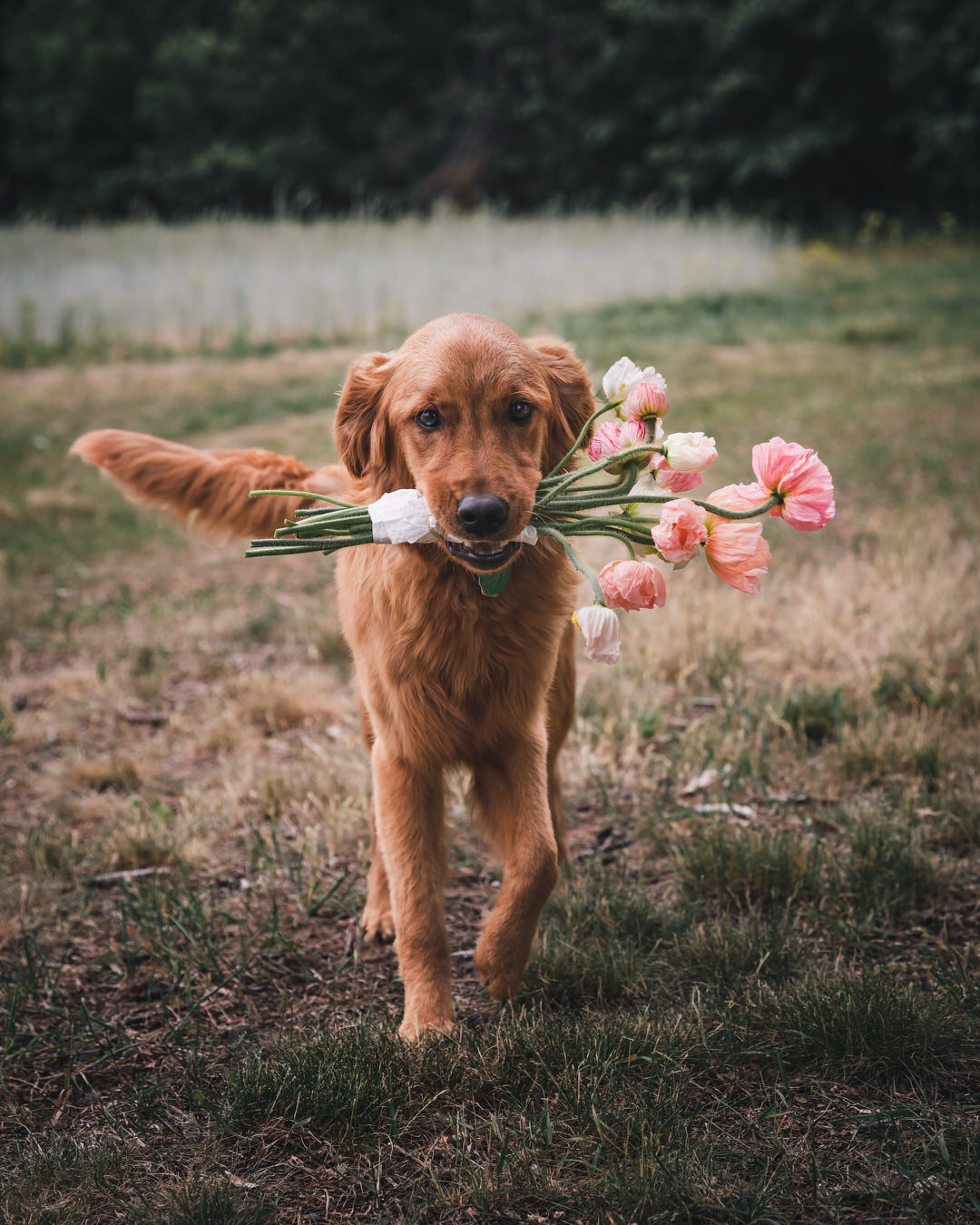
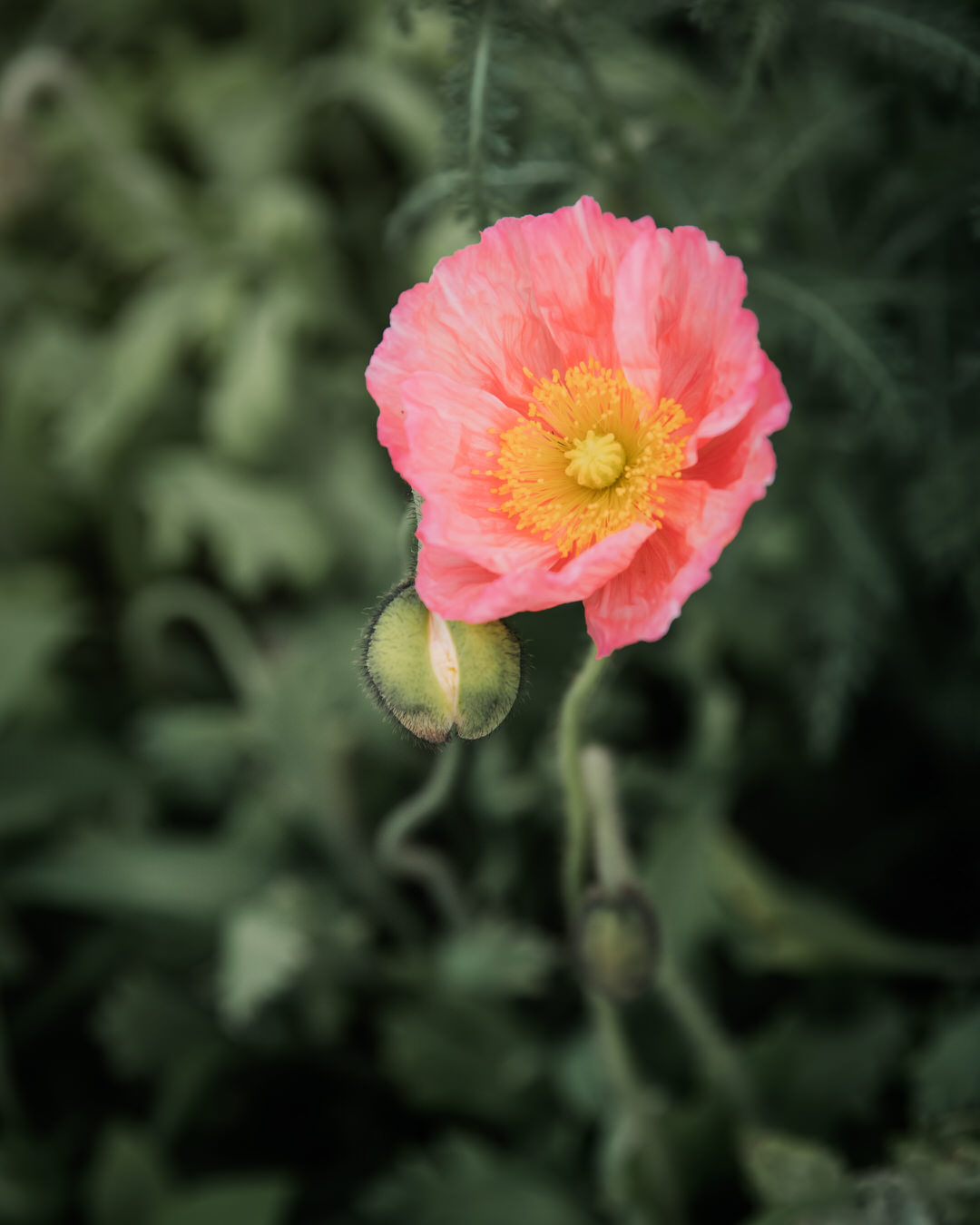
Environmental Factors: N&B
SCF recommends growing on at 45–55F (10–13C) and that poppies do poorly in temperatures above 70F (21C). Plants will flower at warmer temperatures but plant quality and bloom size are reduced as temperatures rise. They prefer well-drained soil of general fertility.
Environmental Factors: BTS
Our springs can go from absolutely frigid (below 0F) to ungodly hot (90sF) in a blink (literally a week or two). I find that poppies will still flower when temps rise (even longer than ranunculus and anemones), but as SCF notes, their bloom size decreases and the plants start slowing down. It’s best to plant poppies as soon as possible for your climate. Because of their high price, I generally plant as early as possible in our high tunnel in spring, not wanting to risk overwintering. However, I’ve had fall direct-sown poppies make it over winter, making me want to give an overwintered crop in the tunnel a real go.
Transplanting, Spacing, Support: N&B
Transplant poppies in either the fall (for early spring production) or very-early spring (for late spring production). Space annual varieties 9–15″ apart (SCF). Johnny’s recommends 6–12″ spacing, while Farmer Bailey recommends 6″ for Champagne Bubbles and 9–12″ spacing for Hummingbird. Most growers don’t use support for Iceland poppies.
Transplanting, Spacing, Support: BTS
We plant our poppies out early (March/April for the tunnel). I’ve always spaced them at 6″ even the ‘Colibri’ series, though perhaps I’ll experiment with wider spacing. I do not use support. As noted earlier, do not let poppies sit in their trays for too long as they don’t like getting root bound or having their roots disturbed. Be gentle when transplanting, but after that, you’re in the home stretch because they are generally fuss free after this.
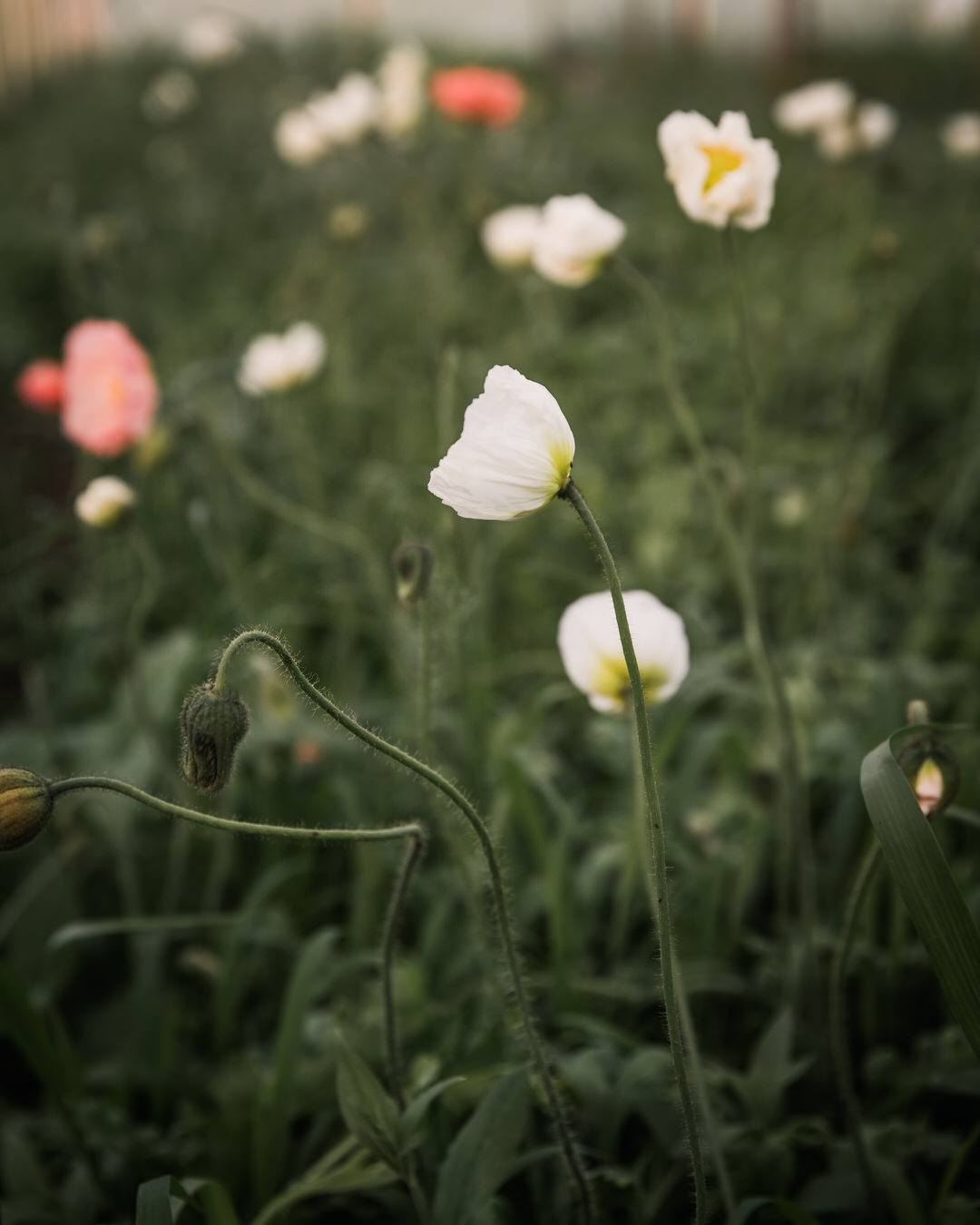
Successions: N&B
One could conceivably have a succession in fall/winter for early spring production and early-spring succession for late spring production.
Successions: BTS
Because poppies do not like temperatures above 70F, that’s a fairly short window in my climate. I only have one planting in spring, but I would like to attempt overwintering a crop.
Nutrition: N&B
Interestingly, the data on fertilizer is very limited. SCF and Johnny’s note nothing, while Farmer Bailey only notes “general fertility.”
Nutrition: BTS
We fertilize our fields organically based on soil tests, and we do not fertilize for each crop individually. I have an eBook that outlines exactly how we do this. I’ve made that available for you here.
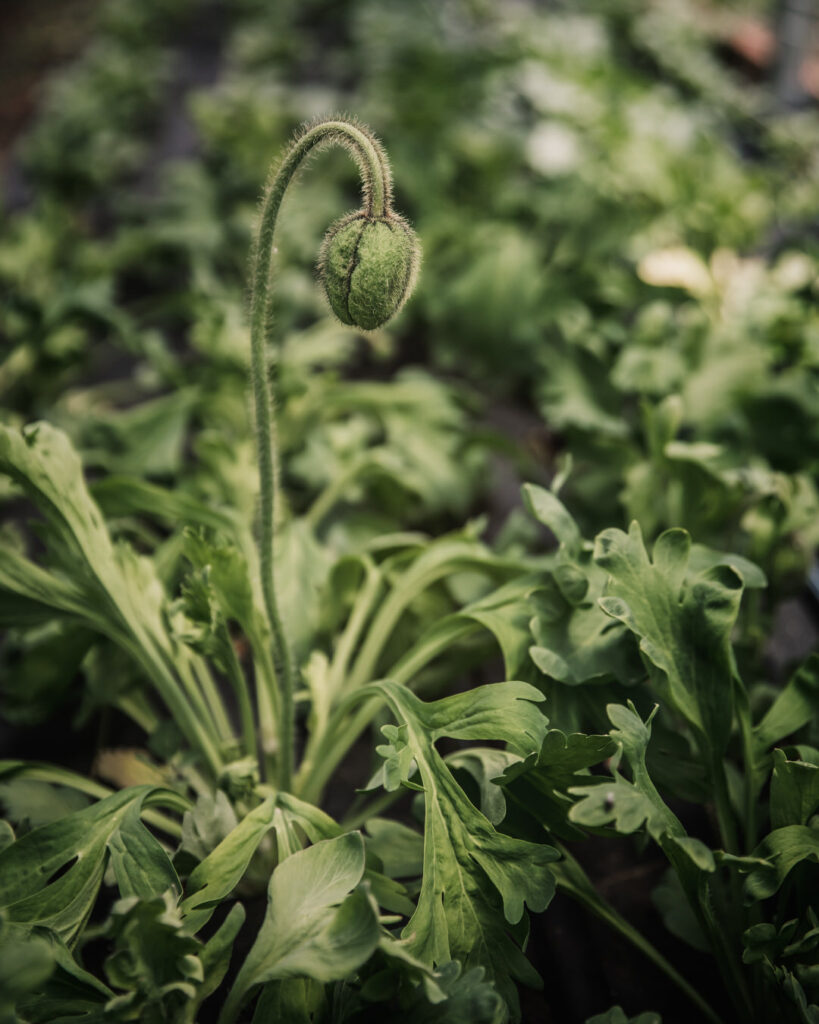
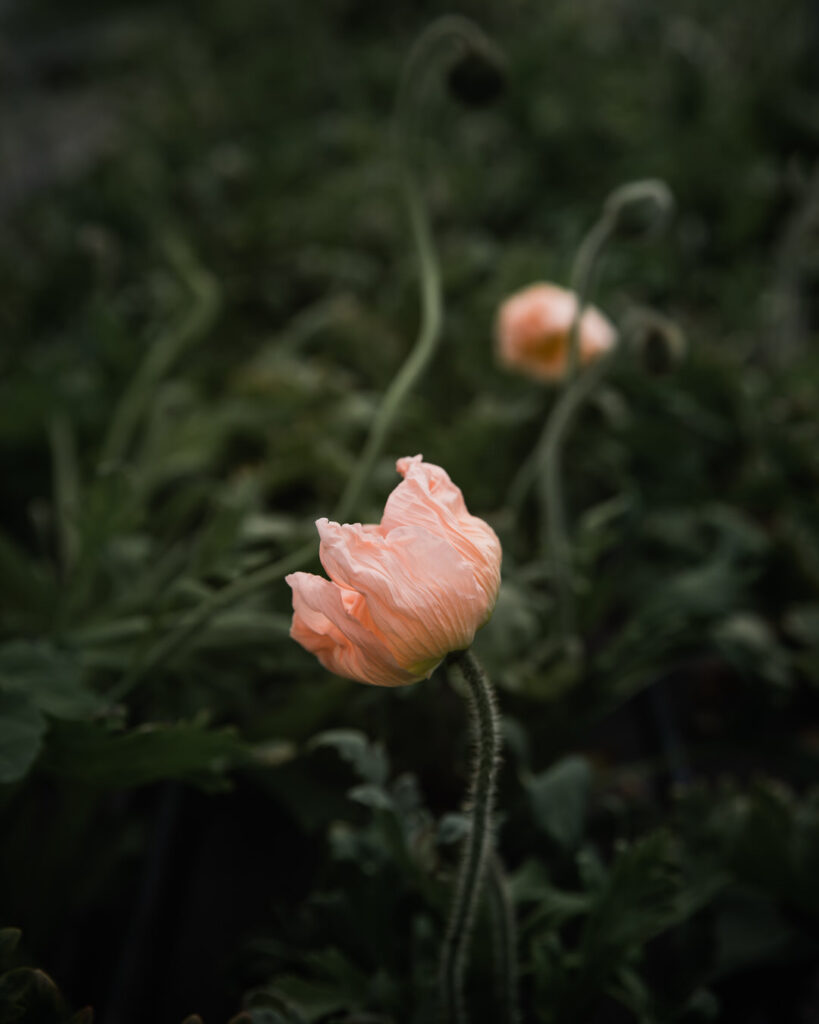
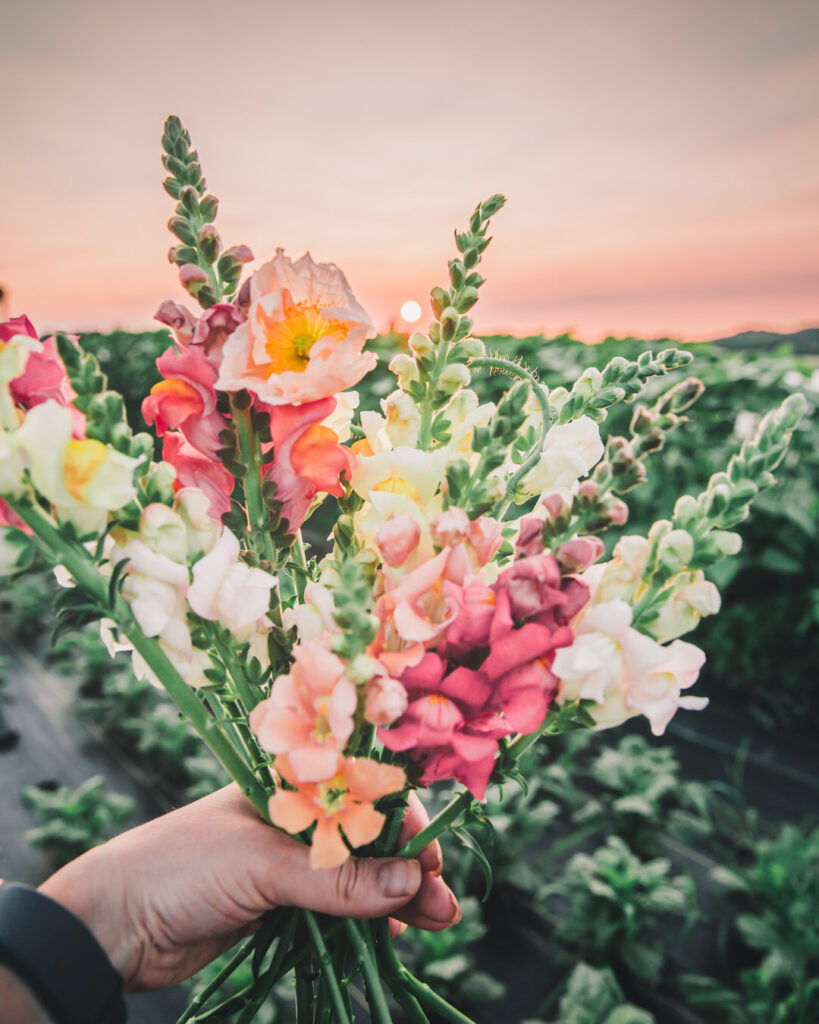
Drainage & Irrigation: N&B
Again, minimal data here, but Bailey recommends well-draining soil.
Drainage & Irrigation: BTS
At our farm, we have gossil-loamy sand, meaning that our soil is more sand than loam. It actually drains excessively to the point of leaching nutrients. Our biggest difficulty is keep plants irrigated, especially in dry spells. For this reason, we do have drip irrigation installed on all of our beds at the home farm.
Pinching: N&B and BTS
Plants should not be pinched.
Bloom Period: N&B
This will be dependent on your location, but in general, fall-planted poppies start blooming just after tulips (Bailey) and 10–15 flowers per stem is not unusual (SCF).
Bloom Period: BTS
Our spring-planted poppies typically start blooming end of May or early June.
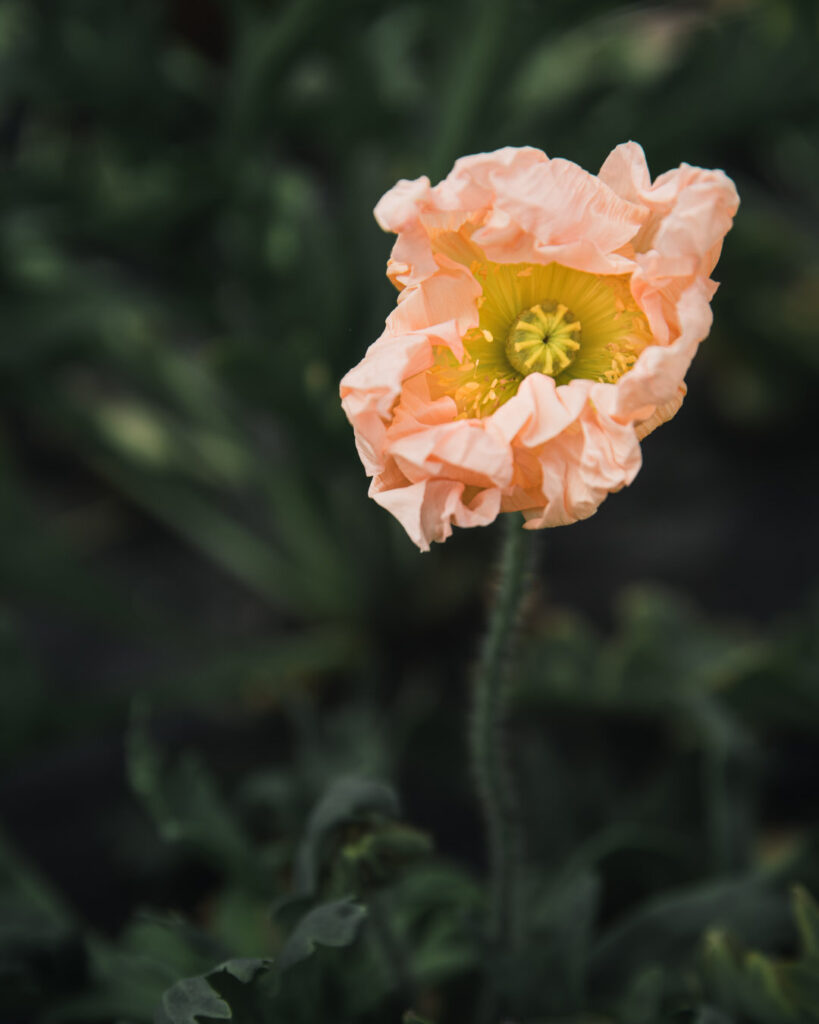
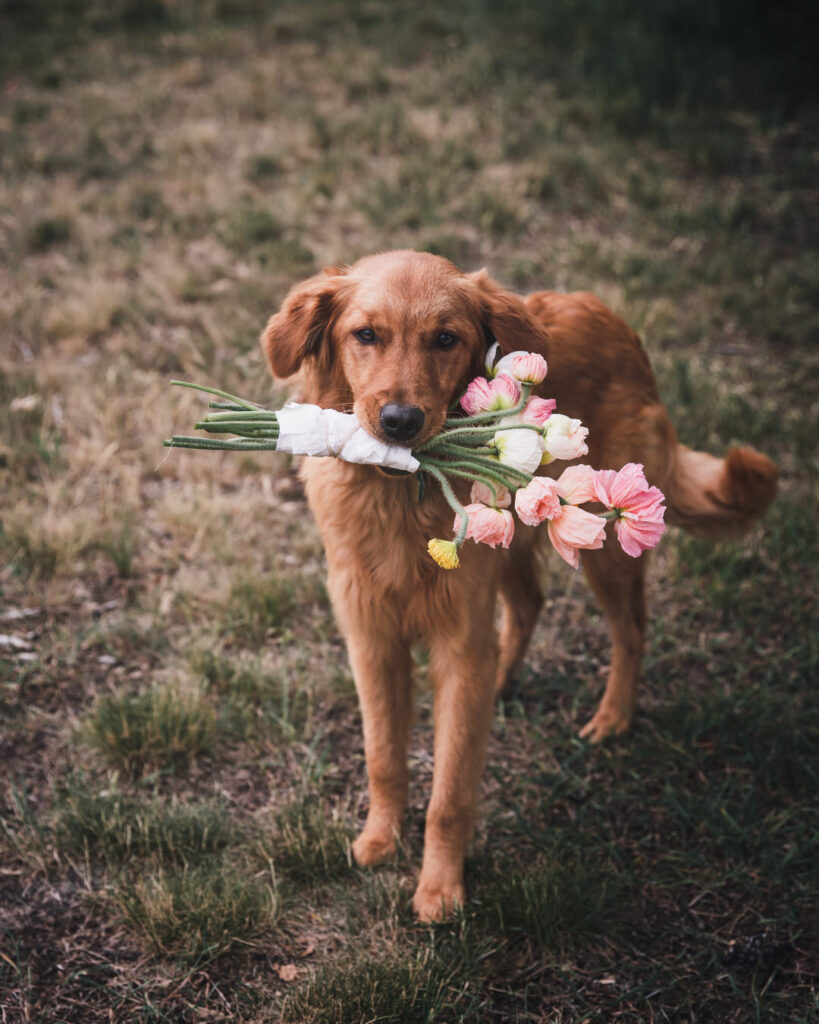
Overwintering: N&B
Poppies can be overwintered, but colder zones may need protection. Johnny’s recommends transplanting 4 weeks from:
- Last 10-Hour Day of the Year at your latitude; and/or
- Average Date of First Hard Freeze (below 28F/–2.2C), which generally corresponds with temperatures regularly dipping below freezing in your area.
Overwintering: BTS
I’ve only overwintered direct-sown poppies in our wildflower area, but I’d like to attempt an actual overwintered crop in our high tunnel. I’ll update this section if/when I learn more.
Harvest & Post-Harvest: N&B
All sources recommend harvesting Iceland poppy buds as they just begin to open and show a bit of color but before they fully expand. Most buds will open during postharvest handling, but a few won’t open no matter how they were handled (SCF), so add in an extra or two in bunches. Flowers may need to be harvested multiple times per day during warm periods.
There is much documented about searing ends or dipping in boiling water, but there is just as much out there saying this does not make a difference. The idea is to cauterized the stem to keep in the milky sap. Postharvest Handling notes that burning and dipping in 194F (90C) water for 5 seconds has been reported to increase vase life by one day in Italy.
Interestingly, Farmer Bailey notes the following: Alternatively, you can simply pick them and store dry in a closed cardboard box in your cooler. The stem will naturally seal itself. When you are ready to use the stems, simply stand them up in clean water in the cooler. They will start to open by the following morning. You can store dry flowers for up to a week with little decline in vase life.
Postharvest Handling lists an expected vase of like 5 to 8 days, with the longest vase life due to commercial holding solutions. Commercial holding solutions have been shown to increase vase life by two days.
Iceland poppies can be stored for a week in either water or boxes with no decrease in vase life. Vase life dropped at two weeks of storage, and flowers cannot be stored for three weeks (Postharvest Handling).
Harvest & Post-Harvest: BTS
We harvest Iceland poppies at the same stage as recommended above. You can see a video of exactly when I harvest here. I’ve seared stems with a blow torch in the past, but I cannot say I see a huge difference, so I’ve fallen away from this. Typically, I store dry in our cooler OR in water, just whatever works at the time. I’ll store up to a couple weeks for a wedding. I do use holding solution and our cooler is usually around 38F.
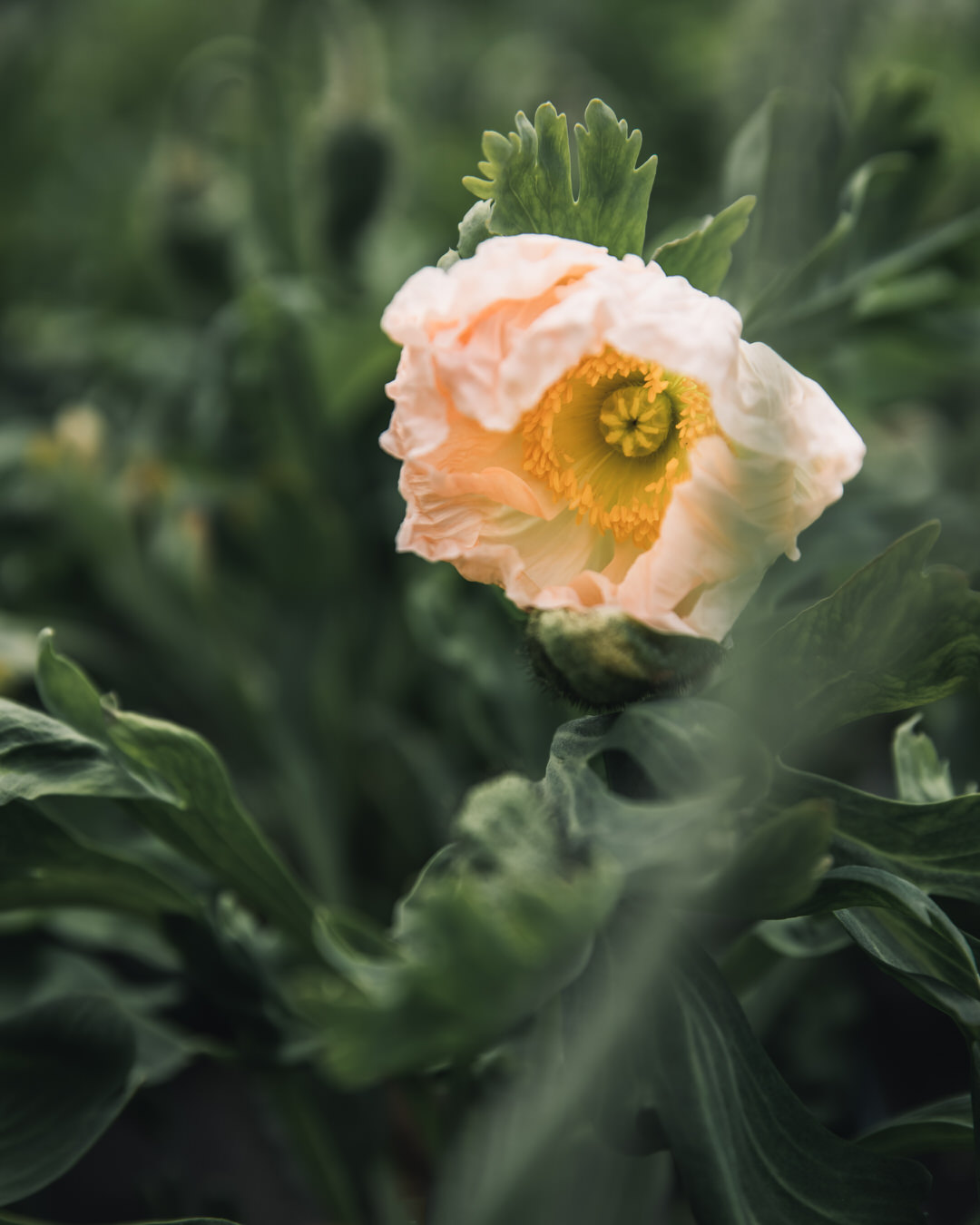

Pests & Disease: N&B
SCF notes that southern blight (Sclerotinia) can be an issue for poppies, especially with over-wet conditions. It results in crown rot, which shows up as a fuzzy white fungus. Farmer Bailey notes botrytis and other fungal diseases as potential issues. For pest and disease control, consult Johnny’s comparison chart here.
Pests & Disease: BTS
We’ve never had any major issues with poppies.
Variety Selection: N&B
SCF recommends ‘Champagne Bubbles,’ ‘Flamenco,’ Highlight Mixed, Kelmscott Strain, ‘Meadow Pastels,’ Monarch Mix, ‘Party Fun,’ ‘Popsicle,’ ‘Red Sails,’ San Remo Mix, ‘Solar Fire Orange,’ ‘Summer Promise,’ Temptress Series, and Wonderland Mix. Farmer Bailey offers ‘Champagne Bubbles’ and ‘Colibri,’ while Johnny’s offers ‘Champagne Bubbles.’
Variety Selection: BTS
As noted earlier, my hands-down favorite Iceland poppies are the ‘Colibri’ series, specifically the Pastel Mix (La Dolce Vita). Colibri is a tetraploid version of the Iceland poppy, so they grow taller and wider than the natural species and have very large flowers (Farmer Bailey). However, I’ve also enjoyed ‘Pastel Meadows’ and might attempt ‘Champagne Bubbles’ for overwintering experiment for the price. For me, though, poppies are a specialty crop that I love to use in weddings and design work (though certainly our retail customers will get a few tucked in too). For that reason, I prefer to splurge on the Colibri.
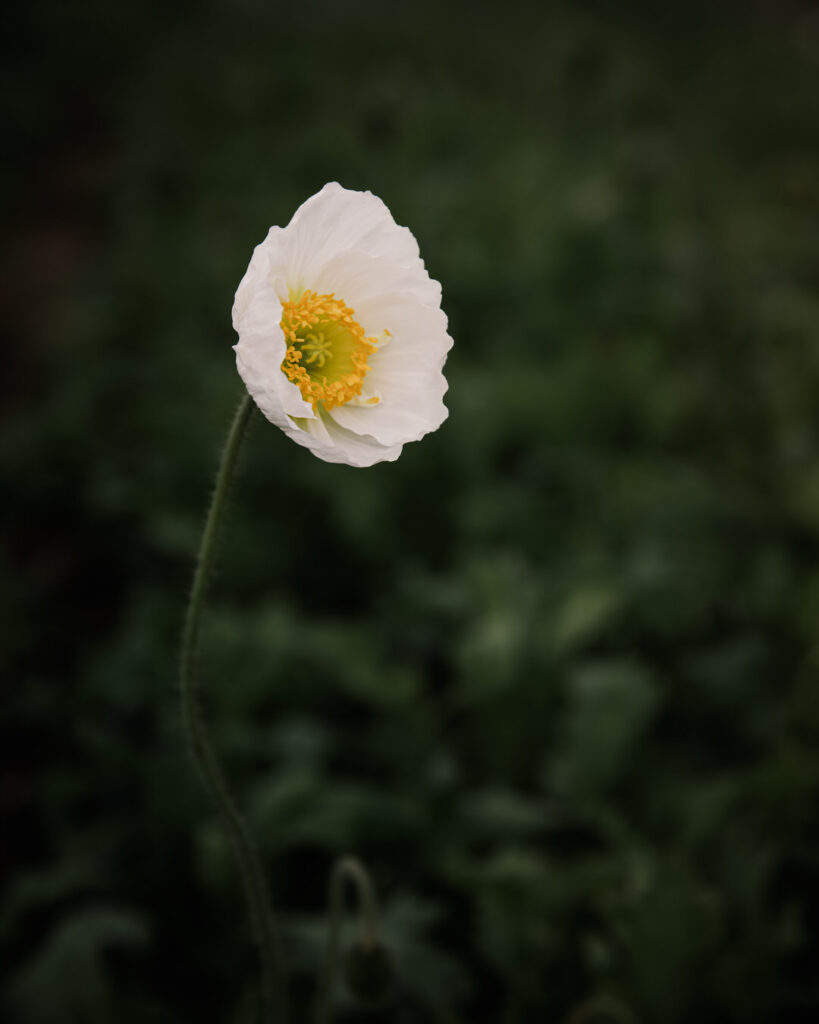
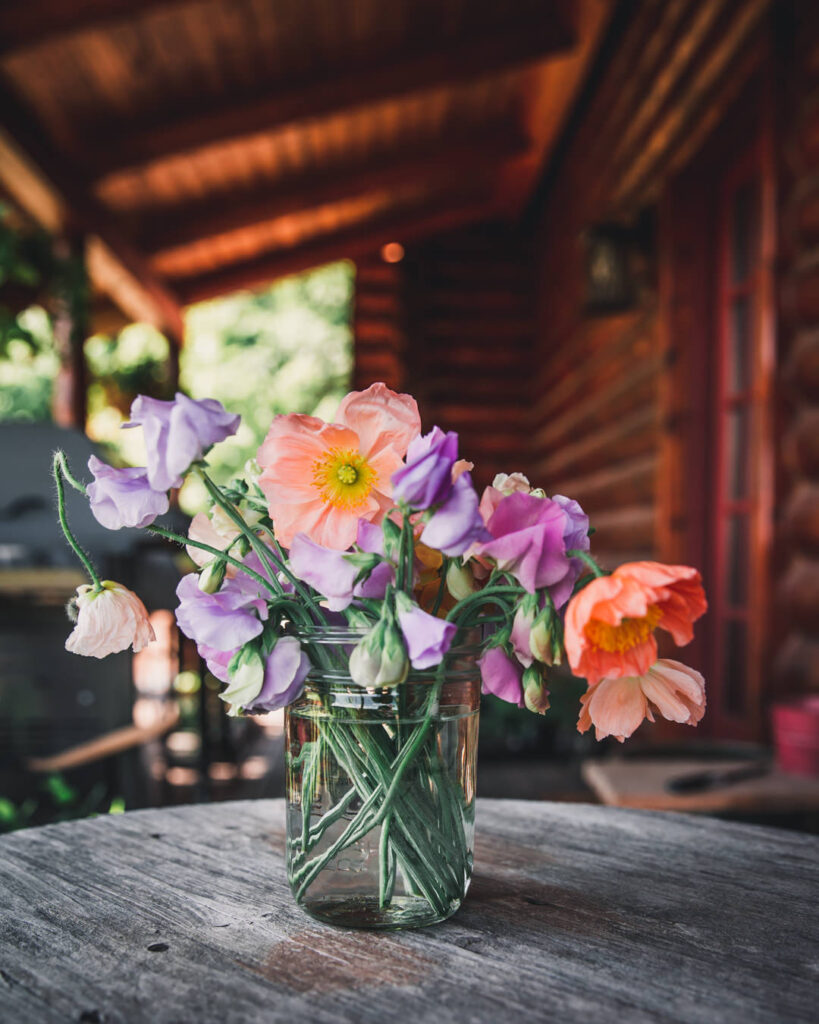
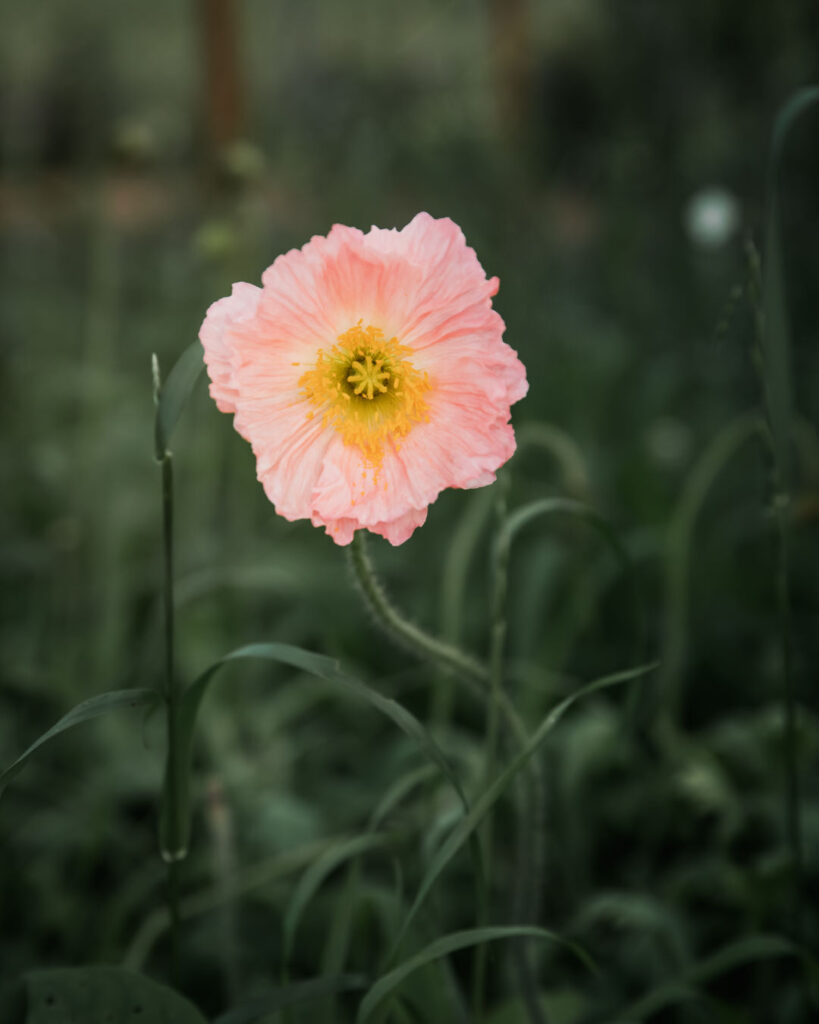
Pricing: N&B and BTS
BOSTON Ornamental Terminal Prices as of 16-June-2019:
POPPY: OFFERINGS LIGHT. per bunch, long 13.50 – 13.50
I typically hoard all of my Iceland poppies for weddings, events, and special customers. My florist price is $15. Interestingly, Bear Creek has/had a poppy CSA (4 weeks for $160, 10-stem mix of ‘Champagne Bubbles’ and ‘Colibri’).
Design: BTS only
I love, love, love (no, like love) weaving wonky poppy stems into designs. They are one of the rare flowers that adds an incredible amount of movement with just a stem or two. They really stole the show in bridal bouquets this June (one was my sister’s). I’ll add some photos as soon as I get them! Poppy stems are pretty strong, but I like to support them in bouquets with other stems surrounding them. I tell brides that if they get sad, they can simply snip them out and no one will be the wiser.
I adore a poppy moment and prefer to have them floating above like they’re dancing. Until I have more photos, here is an example on pinterest (the white ones). I find they do this quite effortlessly (they’re stems are wiry, but strong, especially the Colibris). For design, I will gently open up the blooms, so they are showy for the event. You can find a video of me doing this here.
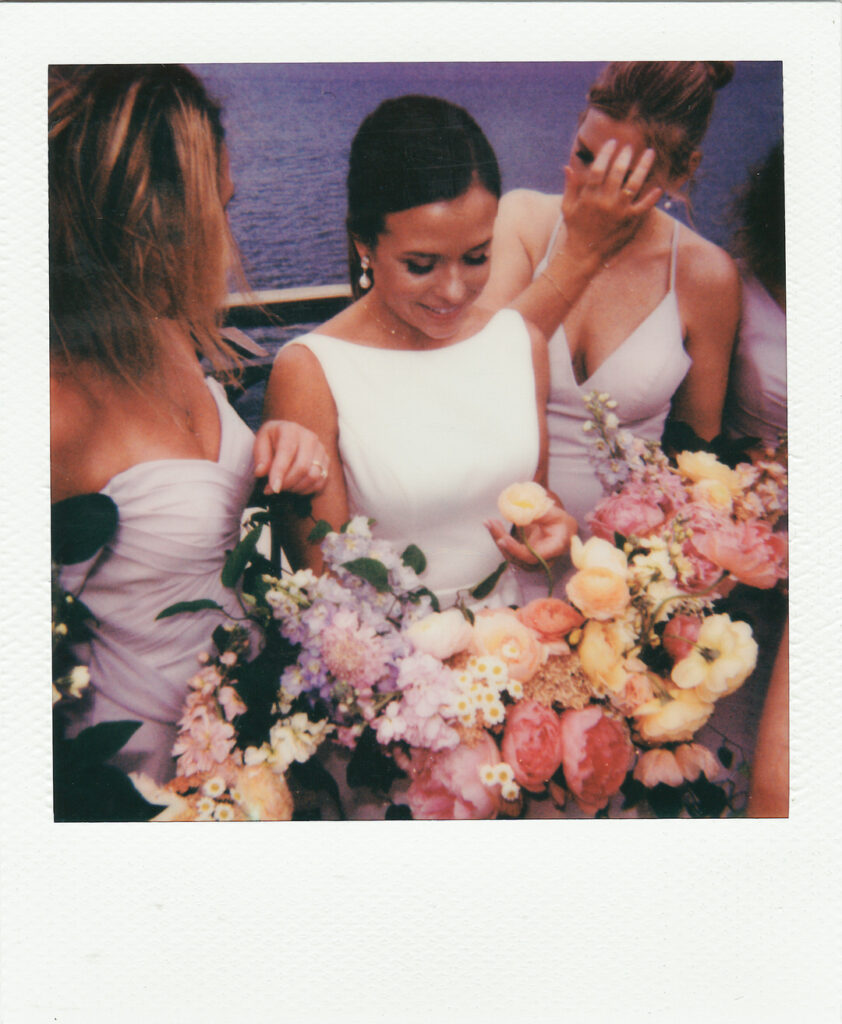
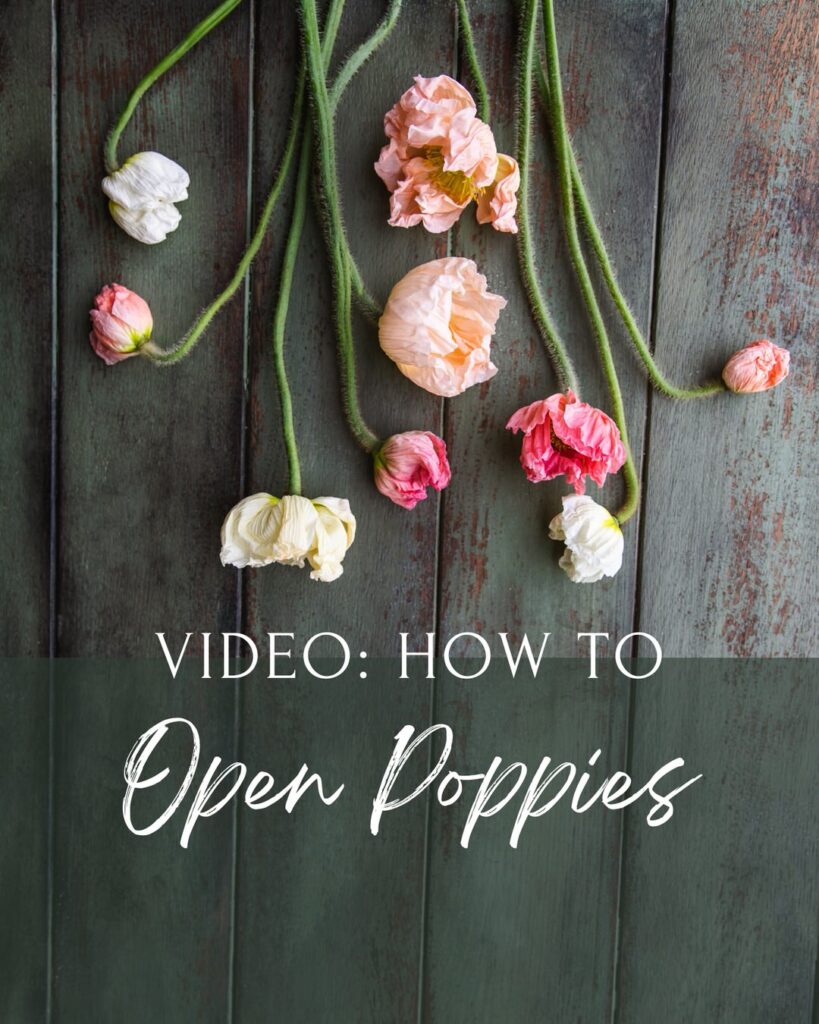
Wrap Up
OK, my friend, that is IT for this Plant Profile. What do you think? Did you find some useful nuggets? Be sure to save a PDF copy using the buttons below, so you can always refer back to it.
Have any questions or something you want to share with me or others? I know I say this ad nauseam, but I truly believe in the power of the collective and that we all have something unique and powerful to share, so please leave a question or share a comment below. We’re all better for it, and I thank you in advance!
Cheers pal!
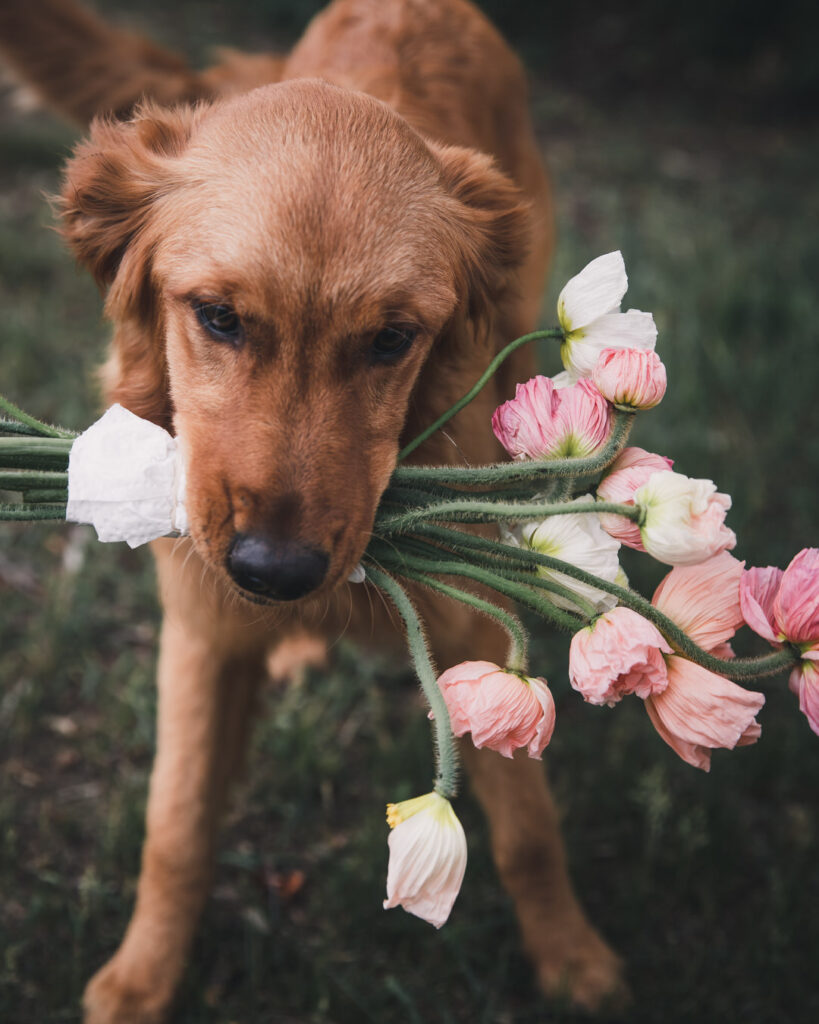
cLICK FOR Comments +